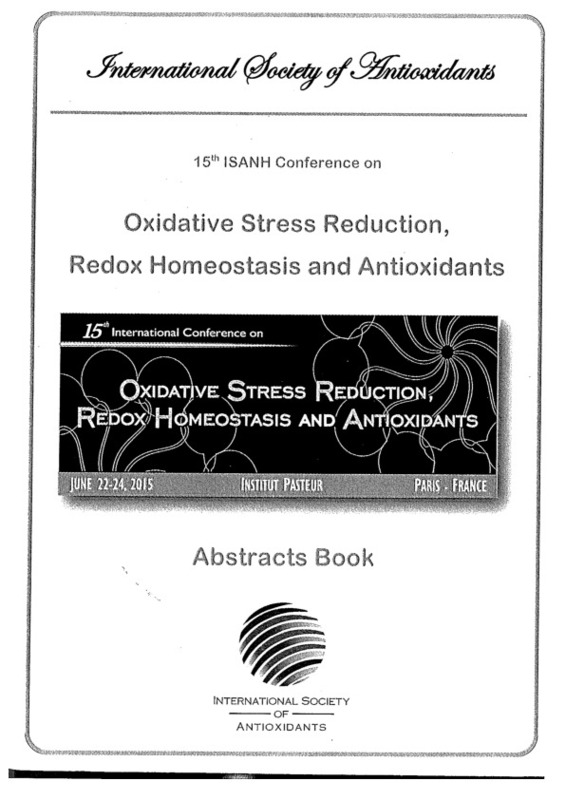|
Resumen:
|
[ES] El objetivo del presente proyecto es determinar, en el cerebro de ratón, el posible daño
oxidativo en biomoléculas tras la administración aguda de etanol. Sí este daño es
detectable, también se ...[+]
[ES] El objetivo del presente proyecto es determinar, en el cerebro de ratón, el posible daño
oxidativo en biomoléculas tras la administración aguda de etanol. Sí este daño es
detectable, también se pretende aseverar que es el acetaldehído, un metabolito del
etanol, el causante de este daño.
El alcohol es una sustancia psicoactiva ampliamente consumida y culturalmente
aceptada en casi todo el mundo. Tras su ingesta, se producen en el individuo
alteraciones tanto motoras como conductuales. A largo plazo, el consumo habitual de
bebidas alcohólicas está relacionada con enfermedades (neurológicas,
cardiovasculares y hepáticas, entre otras) y puede generar dependencia y síndrome de
abstinencia.
Según la Organización Mundial de la Salud (OMS), el 5,9 % de los fallecimientos
mundiales están relacionados con el alcohol. El etanol es transformado a acetaldehído,
un compuesto altamente tóxico y al que se le atribuyen los efectos nocivos del alcohol.
Esto se debe a su poder carcinógeno y capacidad de interacción con otras moléculas. En
el cerebro, el acetaldehído es generado mayoritariamente por la enzima catalasa y es
capaz de interacciona con neurotransmisores. También genera un ambiente de estrés
oxidativo neuronal debido a la generación de especies reactivas de oxígeno (ROS) que
ocasionará daños a las biomoléculas.
Para hacer frente a la acción tóxica de estos radicales libres, los organismos presentan
un sistema de defensa antioxidante formado por moléculas con actividad antioxidantes
y enzimas como la superóxido dismutasa (SOD), glutatión peroxidasa (GPx) y catalasa
(CAT).
En este proyecto, mediante el análisis de marcadores de estrés oxidativo, se pretende
averiguar si se produce daño oxidativo tras la administración aguda de etanol en
cerebro de ratón. El hecho de realizar una administración aguda y no crónica,
corresponde al interés por la extrapolación de los resultados en población joven,
caracterizada por un consumo puntual de grandes cantidades de alcohol. Por otra parte,
se ha elegido un agente farmacológico que modifica la actividad del acetaldehído, la Dpenicilamina.
El uso de este fármaco tiene como objetivo esclarecer si es el acetaldehído
y no el etanol el causante del daño oxidativo neuronal, en el caso de que la
administración aguda lo ocasionase.
[-]
[EN] The purpose of the current project is to determine the possible oxidative damage in
biomolecules after the acute administration of ethanol in the brain of mice. If this
damage is detectable, another ...[+]
[EN] The purpose of the current project is to determine the possible oxidative damage in
biomolecules after the acute administration of ethanol in the brain of mice. If this
damage is detectable, another purpose is to assert that it is produced by the
acetaldehyde, a metabolite of ethanol.
Alcohol is a psychoactive substance widely consumed and culturally accepted in almost
all the world. After its ingestion, motor and behavioural alterations are produced in the
individual. In long term, the regular consumption of alcoholic beverages is related to
diseases (neurological, cardiovascular and hepatic, among others) and can produce
alcohol dependence and withdrawal symptoms.
According to the World Health Organization (WHO), 5.9% of global deaths are related to alcohol. Ethanol is converted into acetaldehyde, a highly toxic compound and the
cause of the harmful effects of alcohol. This is due to its carcinogenic potential and its
ability to interact with other molecules. In the brain, acetaldehyde is generated mainly
by the enzyme catalase and it is able to interact with neurotransmitters. Also, it generates a neuronal and oxidative stress environment, due to the generation of reactive oxygen species (ROS) which causes biomolecular damage.
To cope with the toxic action of these free radicals, organisms have an antioxidant defence system formed by molecules with antioxidant activity and enzymes such as superoxide dismutase (SOD), glutathione peroxidase (GPx) and catalase (CAT).
In this project, through the analysis of oxidative stress markers, we want to find out whether oxidative damage occurs after an acute ethanol administration into a mouse’s brain. The fact of an acute administration, and not chronic, is to extrapolate these results with the habits of alcohol consumption in young people. Nowadays, youth consumption is being occasional and of large amounts of alcohol. Furthermore, we have chosen a pharmacological agent to modify the activity of acetaldehyde, the Dpenicillamine.
If the acute administration causes neuronal oxidative damage, another objective of the project is to clarify through this drug, whether it is produced by the acetaldehyde and not by the ethanol.
[-]
|








